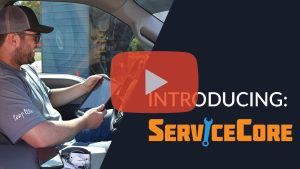On the Road to Success: The Portable Restroom Operator’s Driver Playbook
Key Takeaways
- Offer competitive incentives and implement a thorough vetting process to build a reliable team of drivers.
- Prioritize continuous learning and assessments to ensure your drivers meet industry standards.
- Boost daily efficiency through systematic checks and strategic route planning.
- Embrace software like ServiceCore and GPS technology to improve productivity and operational efficiency.
- Enhance professionalism and proactive feedback handling to improve customer service.
Introduction
In this playbook, we explore how to create and improve a great team of drivers. We cover everything from how to hire the right people and get them started, to teaching them advanced skills and managing their day-to-day work. Whether you’re making small changes to your current team or starting from scratch, this book will give you helpful tips to make sure your drivers are ready to do their best.
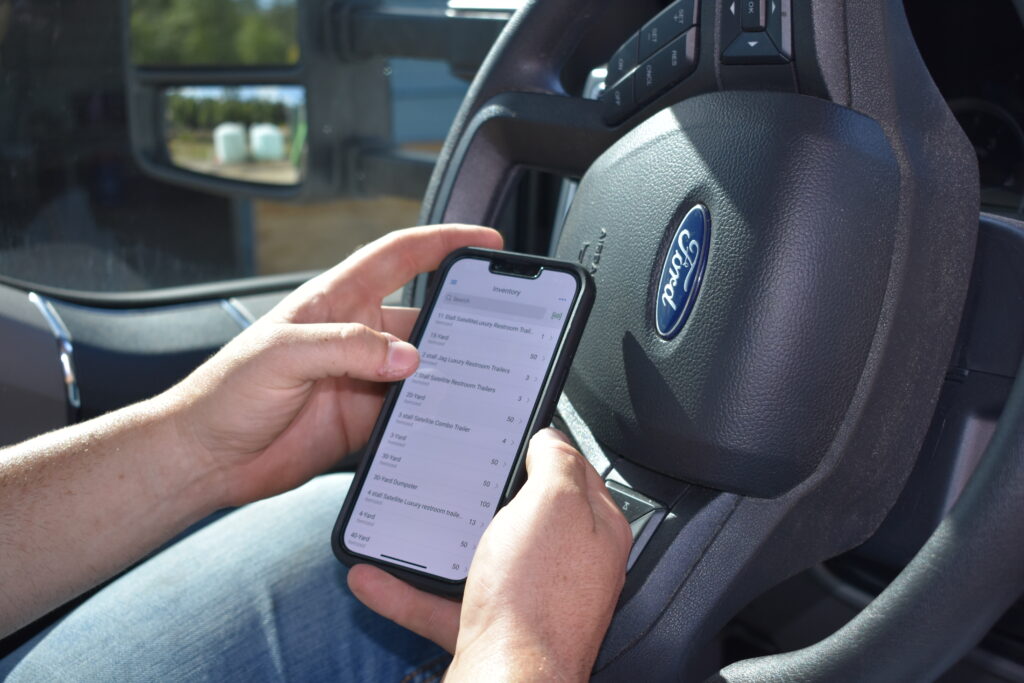
Section 1: Recruitment and Onboarding
Finding the right drivers for your portable restroom rental business starts with a robust recruitment strategy. But how do you make your business attractive to potential candidates?
- Incentives: Offer competitive pay, performance bonuses, holiday bonuses, company events, holiday parties, and other benefits. Consider providing opportunities for skill development and advancement within the company. Creative tips:
- Try offering a YETI cooler at their 90 day mark if the driver signs on and performs well. It’ll give you a competitive edge and only cost $250.
- Set up a referral bonus program. If one of your employees refers a driver that gets hired, performs well, and makes it past 60 days, give them a referral bonus.
- Partner With A Local Technical School: A great way to recruit drivers is by partnering with a local technical school. Many of them have job fairs where your company can attend and recruit graduates to your business.
- Interviewing Techniques: Focus on behavioral questions that reveal a candidate’s problem-solving abilities, time management, customer service skills, and adaptability. Sample questions might include: “Describe a challenging situation you faced on the road and how you handled it,” or “How would you handle a dissatisfied customer at a delivery location?” Pro tip: One unique interviewing technique could be a “ride along interview.” It gives your candidate a front row seat to this unique role.
- Desired Qualities: Look for candidates who demonstrate punctuality, strong communication skills, a safety-first attitude, and an ability to work independently.
Licenses Required
- Commercial Driver’s License (CDL): Emphasize the importance of a valid CDL, as it’s often a non-negotiable requirement for operating larger vehicles and transporting specific loads. Pro tip: Sponsor a current employee that’s interested in obtaining their CDL. This could be an advancement opportunity for a standout employee that’s ready for growth.
- Regional Variations: Depending on the region, there might be additional certifications or permits required. Stay updated with local regulations and ensure prospective drivers meet these criteria.
Evaluation of Personal Driving Record:
Identifying Potential Red Flags Before bringing a driver on board.
- Review Their Driving Record: Check for any serious violations, repeated minor offenses, or patterns of reckless behavior. While everyone can make mistakes, consistent issues might indicate a potential liability.
- Background Checks: Ensure you’re hiring trustworthy individuals by conducting a comprehensive background check. This will further safeguard your business and its reputation. Here is a site you can use to search public records.
New Hire Process:
Integrating Company Culture and Values Once you’ve identified the right candidates, the onboarding process begins.
- Orientation Sessions: Organize sessions that familiarize drivers with company history, mission, values, and expectations.
- Mentorship Programs: Pair new drivers with seasoned veterans. This mentor-mentee relationship can help newcomers understand the practical aspects of the job and company culture.
- Feedback Mechanism: Encourage an open line of communication. Create platforms where they can share feedback, ask questions, or voice concerns.
Proper Gear For Drivers:
- Uniform: A standardized uniform not only promotes professionalism but can also offer basic protection against splashes and spills. It should be durable, easy to clean, and appropriate for all weather conditions. Footwear should be slip-resistant and provide adequate ankle support. Steel-toed boots might be necessary for added protection.
- Personal Protective Equipment (PPE): Gloves, safety goggles, and face masks should be provided and worn, especially when handling chemicals or during cleaning processes.
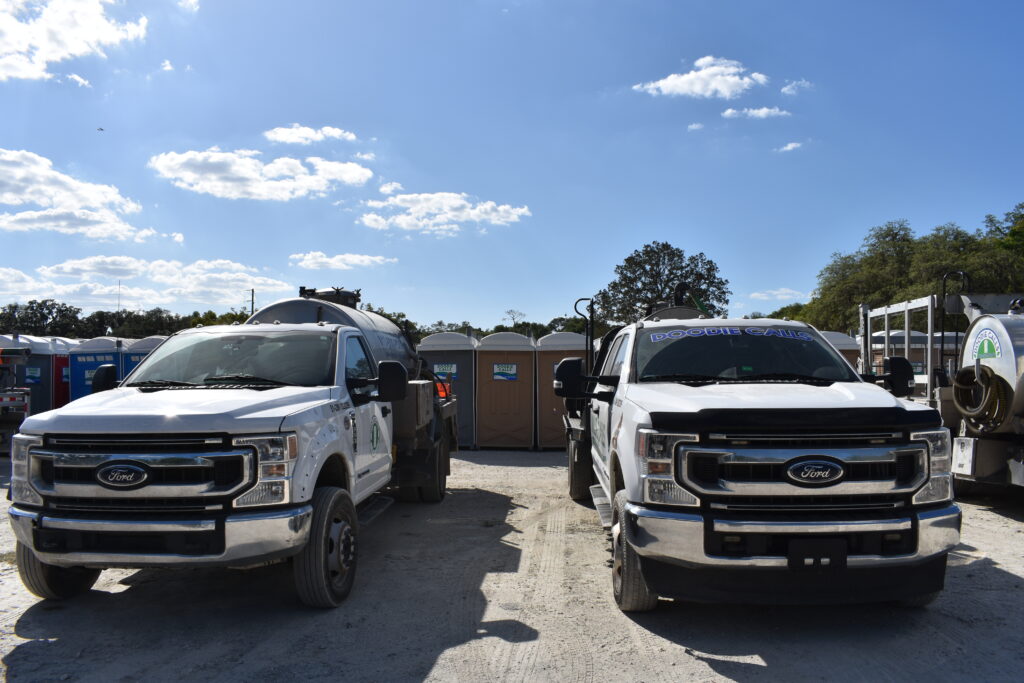
Section 2: Training and Development
To ensure smooth operations and the delivery of excellent customer service, investing in consistent training and development is crucial. Remember, your drivers represent the face of your brand.
Here are some things to consider:
Riding Shotgun With Veterans:
There’s no better way to learn than from those who’ve been in the field.
- Job Shadowing: Allow new drivers to ride along with seasoned professionals. This provides first hand exposure to the job’s nuances, from customer interactions and the process of servicing a unit, to handling unexpected hitches.
- Debrief Sessions: After the ride-along, conduct sessions where the new driver can discuss observations, ask questions, and receive feedback from their veteran counterpart.
Quality Control:
Continuous improvement is the name of the game. Regular assessments can help pinpoint areas of excellence and those in need of further training.
- Assessment Metrics: Establish clear metrics for driver performance. This can include timeliness, customer feedback, adherence to protocols, and more.
- Feedback Loops: Create an environment where drivers feel comfortable seeking feedback and where mentors or supervisors provide constructive critiques.
- Refresher Courses: Offer periodic refresher training sessions, ensuring that both new and old skills are honed to perfection.
- Toolbox Talks: Set up a weekly morning meeting where veterans and newer employees can come together and communicate. These are also great for safety discussions.
PSAI Industry Standards: The Portable Sanitation Association International (PSAI) lays down industry standards that are vital for every driver to understand and follow. They offer certified technician courses that you may want to provide for your drivers. If you’re not leveraging what the PSAI offers, it may be time to take a closer look.

Section 3: Daily Operations and Route Management
Efficient daily operations form the backbone of a successful portable restroom rental business, and every detail matters.
Pre-trip and Post-trip Inspections:
The U.S. Department of Transportation (DOT) requires commercial vehicle drivers to conduct pre- and post-trip inspections to ensure safety and roadworthiness. This can be done manually with printed sheets, or with specialized software.
- Pre-trip Inspection: Prior to starting their day, drivers must thoroughly check the vehicle’s engine fluids, interior, and exterior conditions, marking each item with a check if satisfactory or circling any issues to be reported, ensuring the vehicle is safe and ready for service.
- Post-trip Inpsection: At the end of the day, drivers are responsible for identifying and circling any new issues that arose during their route, or marking the vehicle as okay if no significant problems occurred, to maintain ongoing vehicle safety and service readiness.
- Leveraging Software: Fleet maintenance software can be a valuable asset to your business and eliminate manual tasks. Digital logs ensure accuracy, ease of reference, and help in scheduling regular maintenance or addressing issues promptly.
Real-time Communication Is A Crucial Part of Customer Service
- Digital Tools: Printing out route sheets and manually transcribing driver notes into your system of record is becoming a thing of the past. Invest in software solutions that help drivers communicate with the office in real time if there is an issue like a locked gate, blocked unit, etc. vs waiting for the driver to turn in their route sheet at the end of the day. This will greatly improve your customer service.
- Hold Customers Accountable: Having a policy where drivers document their work with pictures can help you provide better customer service. For example, have your drivers take time stamped images of the inside and outside of a unit after they’ve serviced it. They can also take pictures of issues like blocked units, so you have the proof you need to hold your customers accountable.
Structuring Pickup and Delivery
Highly successful portable restroom rental businesses often differentiate between dedicated delivery/pickup drivers and those handling the services. Why? Let’s dive in.
- Specialization and Efficiency: With a sole focus on deliveries and pickups, these drivers can become experts in the logistics, ensuring swifter and more efficient operations.
- Flexibility: Dedicated drivers can better handle any changes or unexpected demands in delivery or pickup schedules. And oftentimes P&D drivers will be used as backup if a service tech calls out.
- Reduced Workload: Splitting duties allows each driver to focus on a more narrow set of tasks, preventing burnout and ensuring each job is done thoroughly.
- Enhanced Customer Service: With distinct roles, drivers can take the time to engage more deeply with customers, addressing any specific delivery or pickup-related queries.
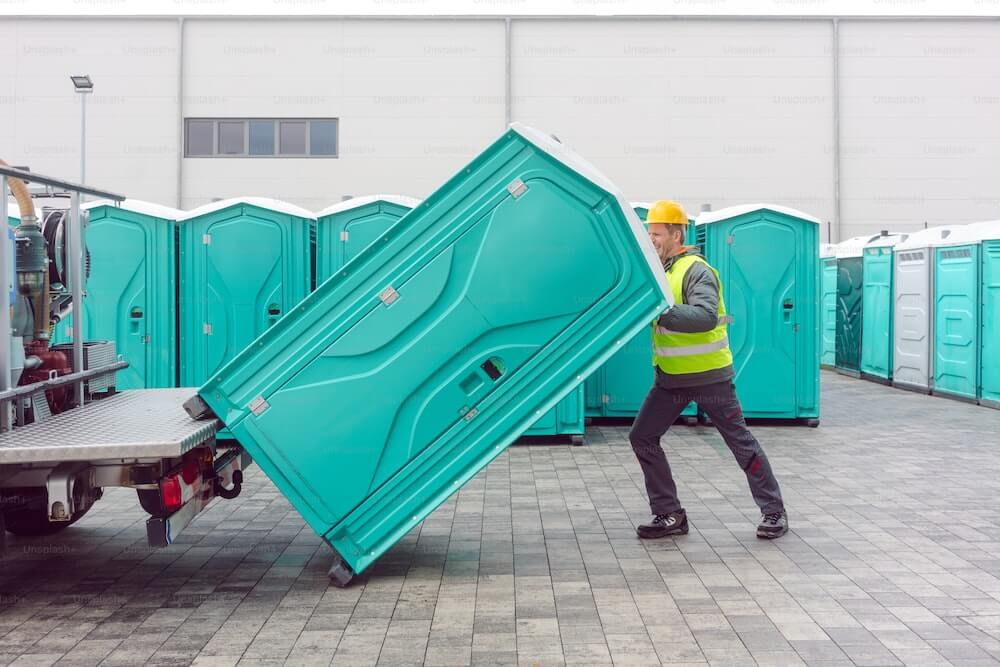
Section 4: Leveraging Technology
The integration of technology in the portable restroom rental industry has revolutionized daily operations, especially for drivers. From GPS to specialized mobile apps like ServiceCore, these tools enhance efficiency, safety, and customer service. This section delves into the advantages and considerations surrounding the implementation of such technology.
- ServiceCore Driver Mobile App: Paper route sheets are becoming a thing of the past. Using a mobile app for drivers actually makes a driver’s job easier. They just log in on their mobile app and click a button to get turn-by-turn directions to the job. Once at the site, another click starts the timer and they get the job done. They have exact location coordinates and can even take a photo if there is an issue for the customer as proof. And you’ll be able to provide ongoing training if you notice that one of your drivers is taking too long to service units.
- Real-time Tracking: With GPS, managers can monitor the real-time location of their fleet, ensuring that drivers are on track and providing insights into any unexpected detours, issues, or stops.
- Route Optimization: If you’re leveraging software that has the ability to optimize your routes (like ServiceCore) your dispatchers have their entire weekly schedule at a glance, they can see the routes, the jobs assigned to each driver and get a clear view of which jobs are completed in real time. If a driver calls out sick, your dispatcher can easily assign jobs to another driver in seconds. And with a click of a button, routes are optimized, so everything isn’t living in someone’s head.
- Dash Cams: Dash cams record real-time footage of the road, providing invaluable data in case of accidents. This footage can be used for training purposes to illustrate best practices or areas of improvement. In situations of disputed accidents or allegations, dash cam footage can serve as objective evidence. They may also be required with some insurers.
- Fuel Savings: With features like route optimization, your drivers routes will be the most efficient, saving you money on fuel and overtime pay.
Embracing technology tailored for the industry is a smart move. They not only elevate the operational efficiency of drivers but also add layers of safety, accountability, and customer service enhancement to the business.
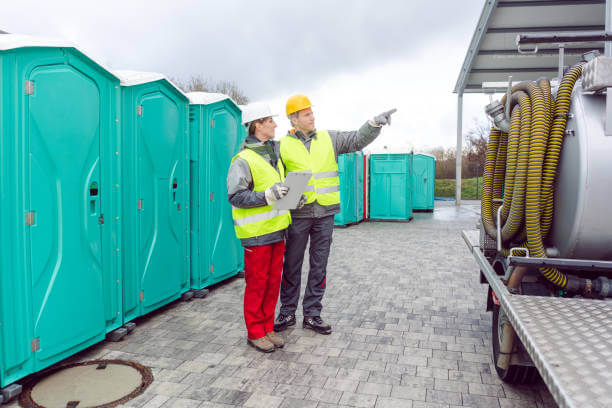
Section 5: Customer Interaction and Service Excellence
In the portable toilet rental business, the drivers often serve as the face of the company. Their interaction with customers directly impacts the brand’s reputation. Here’s how to ensure professionalism:
- Punctuality: Always be on time. If unforeseen delays occur, communicate this to the customer proactively. Software like ServiceCore can help you do this well.
- Uniform and Presentation: Ensure that drivers wear clean and neat uniforms, representing the company in the best light. And don’t stop there. Make sure your trucks look great too. They are moving billboards for your company.
- Knowledge and Confidence: Drivers should be well-informed about the services, products, and common queries, ensuring they can confidently assist customers.
Handling Feedback, Complaints, and Understanding Customer Needs:
Feedback, whether positive or negative, is invaluable for continuous improvement. Here’s a structured approach to handling it:
- Active Listening: When a customer provides feedback or registers a complaint, listen without interrupting. Understand the core issue before responding.
- Empathy: Always approach feedback with empathy. Acknowledge the customer’s feelings and show genuine concern.
- Immediate Resolution: If possible, address the issue on the spot. Quick resolutions can turn a negative experience into a positive one.
- Documentation: Document any feedback or complaints for future reference. This helps in identifying patterns and areas of improvement.
- Follow-Up: If an issue requires further investigation, assure the customer that it will be addressed promptly. And then, follow up! Keep the customer informed about the steps being taken.
- Educate the Customer: Sometimes, feedback stems from misunderstandings. In such cases, take the opportunity to educate the customer about the process, ensuring clarity.
- Continuous Training: Use feedback to identify areas where drivers may need additional training, especially in customer service skills.
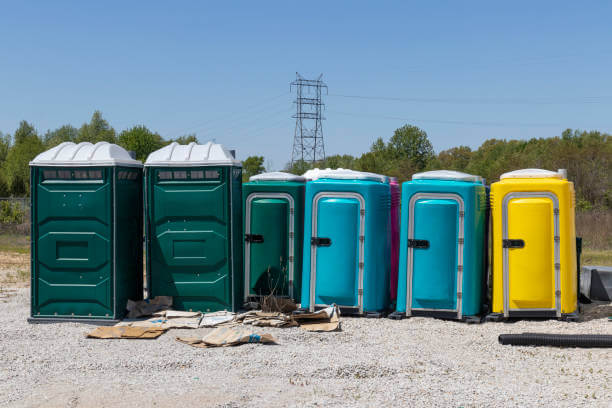
Summary
This Driver Playbook distills essential strategies for cultivating a top-tier team of drivers for your portable restroom rental business. We’ve outlined the best practices for hiring, training, and enhancing your team of drivers.
Here are the key takeaways:
- Recruitment & Onboarding: Competitive incentives and thorough vetting forge the foundation for a reliable team.
- Training & Development: Continuous learning and assessments ensure drivers meet industry benchmarks.
- Daily Operations & Route Management: Systematic checks and strategic route planning boost daily efficiency.
- Technology Utilization: Embracing apps and GPS technology improves productivity and makes your business more efficient.
- Customer Interaction & Service Excellence: Professionalism and proactive feedback handling enhance customer service.
Ready to drive your business forward? Get started with ServiceCore today, and empower your drivers with our cutting-edge software designed for the portable restroom rental industry. Elevate your operations, optimize your routes, and enhance customer interactions with our all-in-one management solution.
FAQs
How can I make my portable restroom rental business attractive to potential driver candidates?
Offer competitive incentives like performance bonuses, company events, and skill development opportunities. Partner with local technical schools for recruitment and implement creative interviewing techniques like “ride along interviews.”
What are some essential qualities to look for in a portable restroom route driver?
Punctuality, strong communication skills, a safety-first attitude, and the ability to work independently are crucial. Also, ensure they have a valid Commercial Driver’s License (CDL) and meet regional certification requirements.
How can I effectively onboard new drivers into my company culture?
Organize orientation sessions, establish mentorship programs, and encourage open communication for feedback and concerns. Provide proper gear like uniforms and personal protective equipment.
What training and development strategies should I use for my drivers?
Implement job shadowing with veteran drivers, conduct quality control assessments, and offer refresher courses. Utilize resources like PSAI Industry Standards for certified technician courses.
How can technology improve the efficiency and customer service of my drivers?
Use software like ServiceCore for route management and real-time communication. Implement GPS tracking, route optimization, and dash cams for safety and operational efficiency.


